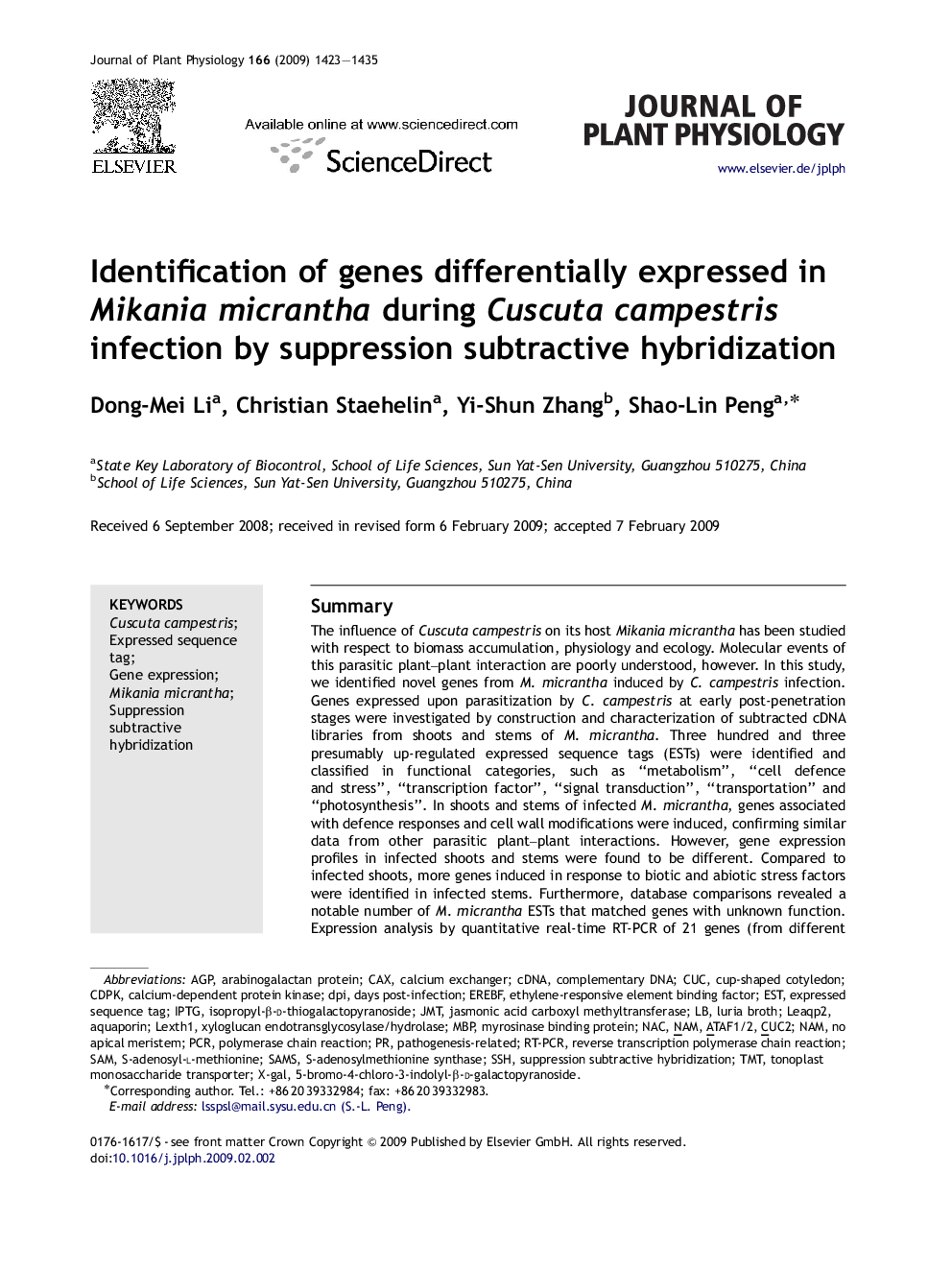| Article ID | Journal | Published Year | Pages | File Type |
|---|---|---|---|---|
| 2057177 | Journal of Plant Physiology | 2009 | 13 Pages |
SummaryThe influence of Cuscuta campestris on its host Mikania micrantha has been studied with respect to biomass accumulation, physiology and ecology. Molecular events of this parasitic plant–plant interaction are poorly understood, however. In this study, we identified novel genes from M. micrantha induced by C. campestris infection. Genes expressed upon parasitization by C. campestris at early post-penetration stages were investigated by construction and characterization of subtracted cDNA libraries from shoots and stems of M. micrantha. Three hundred and three presumably up-regulated expressed sequence tags (ESTs) were identified and classified in functional categories, such as “metabolism”, “cell defence and stress”, “transcription factor”, “signal transduction”, “transportation” and “photosynthesis”. In shoots and stems of infected M. micrantha, genes associated with defence responses and cell wall modifications were induced, confirming similar data from other parasitic plant–plant interactions. However, gene expression profiles in infected shoots and stems were found to be different. Compared to infected shoots, more genes induced in response to biotic and abiotic stress factors were identified in infected stems. Furthermore, database comparisons revealed a notable number of M. micrantha ESTs that matched genes with unknown function. Expression analysis by quantitative real-time RT-PCR of 21 genes (from different functional categories) showed significantly increased levels for 13 transcripts in response to C. campestris infection. In conclusion, this study provides an overview of genes from parasitized M. micrantha at early post-penetration stages. The acquired data form the basis for a molecular understanding of host reactions in response to parasitic plants.
